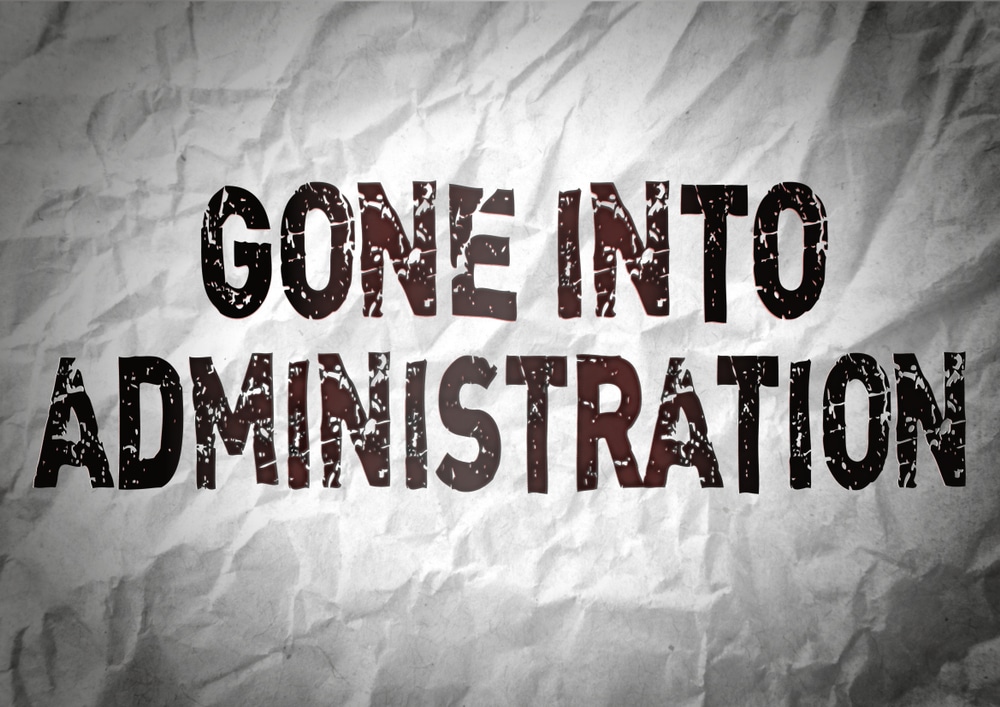Navigating Company Administration: Understanding the Process in the UK
Navigating Company Administration: Understanding the Process in the UK
Blog Article
The Process and Effects of a Firm Getting Into Management
As a company deals with financial distress, the choice to enter management marks a crucial point that can have far-reaching effects for all included parties. The procedure of getting in administration is complex, involving a collection of steps that intend to browse the company towards prospective recuperation or, sometimes, liquidation. Comprehending the functions and responsibilities of an administrator, the effect on numerous stakeholders, and the legal responsibilities that come right into play is crucial in comprehending the gravity of this circumstance. The repercussions of such an action surge beyond the company itself, shaping its future trajectory and influencing the broader service landscape.

Review of Business Administration Refine
In the realm of company restructuring, a necessary initial action is acquiring a thorough understanding of the complex company administration process. Business administration refers to the official insolvency treatment that intends to rescue a financially troubled firm or accomplish a far better result for the firm's creditors than would certainly be feasible in a liquidation scenario. This procedure entails the appointment of a manager, that takes control of the company from its supervisors to evaluate the economic situation and identify the very best course of action.
Throughout administration, the firm is given security from lawsuit by its creditors, supplying a halt period to formulate a restructuring plan. The manager deals with the company's administration, financial institutions, and various other stakeholders to devise a strategy that may include marketing the business as a going concern, reaching a business volunteer setup (CVA) with financial institutions, or ultimately placing the company into liquidation if rescue attempts show futile. The key objective of firm management is to optimize the go back to financial institutions while either returning the firm to solvency or shutting it down in an organized fashion.
Duties and Duties of Administrator
Playing a crucial role in managing the business's economic affairs and decision-making processes, the administrator assumes significant responsibilities throughout the company restructuring procedure. The main responsibility of the administrator is to act in the most effective interests of the company's creditors, intending to attain one of the most positive result possible. what does it mean to go into administration. This includes conducting a comprehensive analysis of the firm's monetary circumstance, developing a restructuring strategy, and carrying out techniques to take full advantage of returns to financial institutions
Furthermore, the administrator is in charge of communicating with various stakeholders, consisting of workers, suppliers, and governing bodies, to guarantee openness and compliance throughout the administration procedure. They must also connect successfully with shareholders, supplying regular updates on the firm's progress and seeking their input when essential.
Furthermore, the manager plays a vital duty in managing the everyday operations of the organization, making essential choices to maintain continuity and maintain value. This consists of assessing the practicality of various restructuring options, discussing with financial institutions, and eventually assisting the firm towards an effective leave from administration.
Influence On Company Stakeholders
Thinking a critical position in supervising the business's economic events and decision-making procedures, the manager's activities during the corporate restructuring process have a direct effect on various company stakeholders. Shareholders might experience a decrease in the worth of their financial investments as the firm's economic troubles are attended to. Financial institutions, consisting of vendors and lending institutions, might face unpredictabilities regarding the settlement of financial debts owed to them. Staff members commonly come across task insecurities due to potential discharges or adjustments in job conditions as part of the restructuring initiatives. Consumers may experience disruptions Check This Out in services or item accessibility throughout the administration process, affecting their trust fund and commitment towards the firm. In addition, the neighborhood where the business operates can be affected by potential work losses or changes in the company's procedures, influencing local economies. Reliable communication from the manager to stakeholders is vital in handling assumptions, alleviating worries, and promoting openness throughout the administration procedure.
Lawful Implications and Responsibilities
Throughout the procedure of company administration, mindful consideration of the legal ramifications and commitments is critical to make sure conformity and protect the rate of interests of all stakeholders included. When a firm gets in administration, it sets off a set of legal demands that must be complied with. Among the key obligations is for the designated administrator to act in the finest passions of the firm's financial institutions. This duty requires the administrator to conduct thorough examinations into the firm's events, assess its financial position, and develop a strategy to make best use of go back to financial institutions.
Additionally, lawful effects arise worrying the therapy of staff members. The administrator should adhere to employment laws regarding redundancies, staff member legal rights, and commitments to supply his explanation needed details to worker representatives. what happens to employees when a company goes into liquidation. Failure to follow these lawful requirements can lead to legal activity against the firm or its administrators
Additionally, the business getting in management might have legal obligations with various parties, including suppliers, property owners, and clients. In essence, understanding and meeting legal obligations are crucial aspects of navigating a firm via the management procedure.
Strategies for Company Recovery or Liquidation
In thinking about the future direction of a company in management, critical preparation for either recuperation or liquidation is important to chart a viable course onward. When going for business healing, vital approaches might consist of performing a thorough evaluation of business procedures to determine ineffectiveness, renegotiating leases or agreements to boost capital, and executing cost-cutting actions to improve success. Additionally, looking for new investment or funding choices, diversifying revenue streams, and concentrating on core competencies can all add to a successful recovery strategy.
On the other hand, in circumstances where business liquidation is deemed one of the most suitable strategy, techniques would certainly include maximizing the worth of assets with reliable possession sales, settling arrearages in an organized manner, and abiding by legal needs to guarantee a smooth winding-up procedure. Communication with stakeholders, consisting of lenders, staff members, and consumers, is vital in either circumstance to maintain transparency and handle assumptions throughout the recovery or liquidation process. Eventually, selecting the appropriate technique depends upon a detailed analysis of the firm's financial health, market position, and long-term prospects.
Final Thought
To conclude, the procedure of a firm getting in management entails the consultation of an administrator, who takes on the duties of taking care of the firm's events. This procedure can have significant consequences for various stakeholders, including employees, find more info creditors, and shareholders. It is important for companies to carefully consider their options and strategies for either recovering from financial difficulties or waging liquidation in order to minimize potential legal implications and commitments.
Firm administration refers to the formal insolvency procedure that aims to save a financially distressed firm or accomplish a much better outcome for the company's creditors than would certainly be feasible in a liquidation situation. The manager functions with the firm's monitoring, lenders, and other stakeholders to create a method that may include selling the service as a going concern, getting to a company volunteer arrangement (CVA) with lenders, or ultimately putting the firm into liquidation if rescue efforts show useless. The primary goal of firm administration is to take full advantage of the return to creditors while either returning the business to solvency or closing it down in an orderly fashion.

Report this page